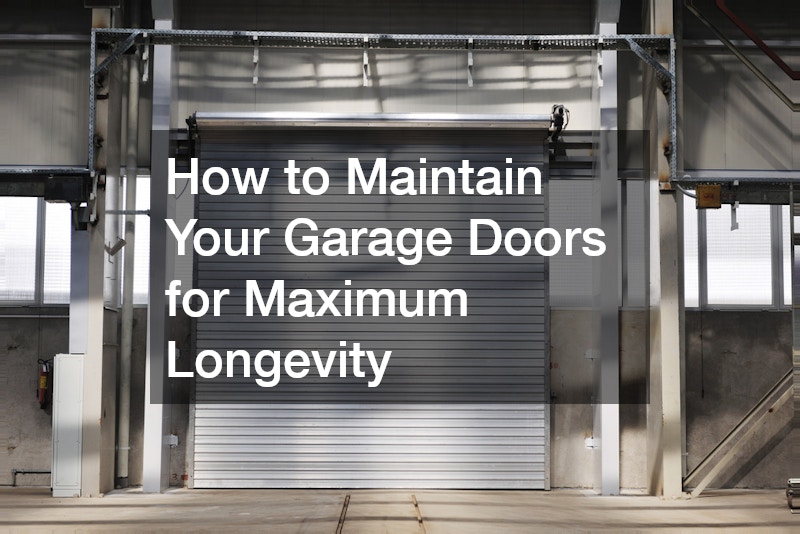In this article, we will explore essential tips and practices for ensuring your garage doors remain functional and last as long as possible. From routine inspections to simple maintenance tasks, taking a proactive approach can help you avoid costly repairs and inconvenient malfunctions. Proper maintenance not only saves you time and money but also improves the overall safety, performance, and efficiency of your garage space.
What Are the Basic Maintenance Tasks for Garage Doors?
Performing routine maintenance on your garage doors is crucial to preventing small issues from becoming significant, costly repairs. Regular inspection involves a thorough check of key components such as springs, cables, rollers, and the garage door opener for any signs of wear or damage. If any parts appear worn or malfunctioning, it is essential to address these issues promptly to avoid compromising the safety and functionality of your garage doors.
Another vital component of garage door maintenance is cleaning. Over time, dirt and debris can accumulate, affecting the smooth operation of your garage doors. It is recommended that you clean these parts with a gentle degreaser or household cleaner and ensure tracks are free from debris. This light cleaning process helps maintain optimal performance and can prevent the early onset of rust or other damage caused by environmental elements.
Once you have completed the inspection and cleaning tasks, a simple test can ensure your garage door is in proper working condition. Open and close the door manually to check for any unusual sounds or resistance during operation. Regular maintenance tests like these can preemptively catch issues that could lead to operational failures or expensive repairs down the line.
How Often Should Garage Doors Be Serviced?
Setting up a maintenance schedule is crucial for the longevity and proper functioning of your garage doors. Experts recommend conducting professional maintenance servicing at least once a year, especially for inspection and critical component lubrication. These regular professional checks by a qualified technician can catch complex issues that might escape an untrained eye.
In addition to professional maintenance, homeowners should conduct DIY checks every two to three months. During these checks, you should pay close attention to the moving parts and examine the door system for any apparent signs of wear and tear. Frequent DIY inspections can complement professional care, ensuring an overarching preventive maintenance strategy.
Seasonal changes, particularly shifts from wet to dry seasons, can demand additional checks. As temperature fluctuations may affect the materials of your door, it is prudent to ensure that your maintenance aligns with seasonal transitions. These weather-driven checks can reveal adjustments needed to maintain optimal garage door performance throughout the year.
What Lubrication Do Garage Door Parts Require?
Proper lubrication of your garage door’s moving parts is critical in preventing premature wear and ensuring smooth, quiet operation. Key areas that require regular lubrication include the hinges, rollers, tracks, and springs, all of which work together to support the door’s movement. Without proper lubrication, these components can grind against each other, leading to squeaky noises, increased strain on the system, and a higher risk of malfunction or costly repairs.
Choosing the right lubricant is essential, as improper types can attract dirt and debris. A silicone-based or lithium-based spray is recommended, as these are less prone to dirt build-up compared to oils or grease. Regular applications, typically at intervals of three to six months, can ensure components remain adequately lubricated to battle friction damage.
Ensuring you apply the lubricant correctly can greatly impact its effectiveness. Apply a thin, even coat on moving parts and remove any excess to prevent dripping or pooling. A well-lubricated garage door system not only prolongs the parts’ longevity but also delivers a quieter, more seamless operation.
How Can Weather Affect My Garage Door’s Longevity?

Weather plays a surprisingly significant role in the longevity and performance of your garage doors. Extremes in temperature can cause materials to expand and contract, which might lead to misalignment or damage. To mitigate such risks, weatherproofing is a vital step that can protect your doors from adverse weather conditions.
Weather stripping around the edges of the door effectively seals out drafts and moisture. Regularly inspecting this stripping and replacing it when it shows signs of wear can prevent these elements from creeping into your garage, ultimately preserving the materials and insulation of your garage doors.
Seasonal adjustments to your garage doors can also be beneficial. During cooler months, you may need to adjust the sensitivity settings on the automatic opener to compensate for material stiffness due to cold weather. Thoughtful adjustments based on the season ensure optimum operation and contribute to prolonging the longevity of your garage doors amidst environmental challenges.
By following these maintenance tips and scheduling regular services, you can significantly extend the lifespan of your garage doors while avoiding unexpected breakdowns. Consistent upkeep helps identify minor issues before they escalate, ensuring your door operates efficiently and safely year-round. Investing a little time and effort into proper care not only enhances the functionality of your garage space but also provides long-term peace of mind and cost savings.
